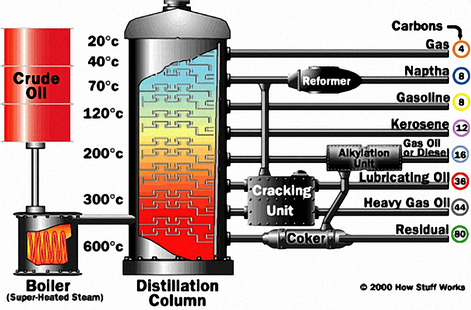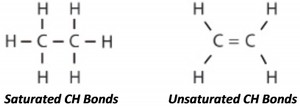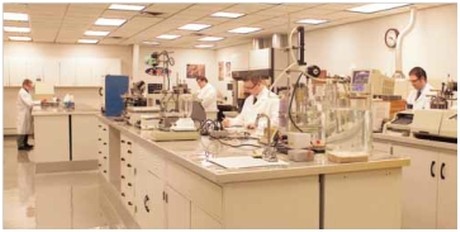Motor Oil Base Stock - Select Synthetics - AMSOIL Authorized Dealer



Main menu:
- Home Page
-
Products
-
AMSOIL Products
- Shop by Product
- Shop by Equipment
- Shop by Category
-
Product Lookup Guides
- Product Lookup Guides - Home
- Filter Lookup Guides
- Auto & Light Truck Lookup Guide
- Motorcycle & Dirt Bike Lookup Guide
- Harley-Davidson Products Guide
- All-Terrain Vehicle Lookup Guide
- Utility Terrain Vehicle Lookup Guide
- Snowmobile Lookup Guide
- Marine Outboard Lookup Guide
- Personal Watercraft Lookup Guide
- Small Engine Lookup Guide
- Free Product Catalog
- AMSOIL - The Blog
- AMSOIL YouTube Videos
- AMSOIL Performance Tests
- The AMSOIL Newsstand
- AMSOIL Testimonials
- AMSOIL Guarantee
- Safety Data Sheets
- Oil Analysis Services
- Shipping & Product Return
- Safe & Secure Shopping
-
AMSOIL Products
- About AMSOIL
-
Oil Basics
- What Is Motor Oil?
- What Is Oil Viscosity?
- What Does Motor Oil Do?
- Why Does Oil Need To Be Changed?
- How Often Should I Change My Oil?
- When Should I Do My 1st Oil Change?
- Can I Mix Different Oils?
- Lubrication Regimes
- Newtonian vs. Non-Newtonian
- Base Oil Groups
- Motor Oil Specifications
- Service Classifications & Grades
- Oil Evaluation Tests
- Oil Filtration
- What is Oil Analysis?
- Why Synthetics?
- Buy Wholesale
- FAQs
- Contact Us
Oil Basics > What Is Motor Oil?


What Is Motor Oil? – Part 2
Motor Oil Base Stock
Motor oil is made up of two basic components: Base Stock (Base Oils) and Additives.
A Base Stock (or Base Oil) can be either a mineral (petroleum-based) hydrocarbon or a synthesized (engineered) chemical compound. The base stock comprises the bulk of the oil’s volume (70 to 80 percent). The base stock lubricates internal moving parts, removes heat and seals piston rings.
Motor oil base stocks can be made from either:
A- Petroleum/Crude Oil (Conventional Lubricants)
B- Chemically Synthesized Materials (Synthetic Lubricants) or
C- A Combination of Both (Synthetic Blends)
It is generally accepted that synthetics outperform conventional oils, but many people don’t understand why.
The differences begin at a molecular level.
A- Conventional Lubricants
Conventional lubricants – the oils most people are familiar with – are refined from crude oil that has been pumped from the ground. Lubricating oil consists of hydrocarbons with between 26 and 40 carbon atoms per molecule.
Contaminating elements such as sulfur, nitrogen, oxygen, inorganic salts, and trace amounts of metal components such as nickel, iron, copper, and vanadium are inherent to crude oil and cannot be completely removed through the refining process and invite the formation of sludge and other products of lubricant breakdown.
The problem with crude oil is that it contains hundreds of different types of hydrocarbon molecules all mixed together. You have to separate the different types of hydrocarbons to have anything useful. Fortunately there is an easy way to separate things, which is what oil refining is all about.
The oil refining process separates the various types of molecules in the oil by weight, leaving molecules similar in weight but dissimilar in structure. Since the refining process cannot distinguish such molecules, the result is a lubricant with a wide assortment of molecules of different shapes and sizes.

Some of the substances in crude oil are detrimental to lubrication. Paraffin (wax), for example, is a common conventional oil contaminant that causes motor oil to thicken in cold temperatures.
Because the assorted molecules of refined lubricants are of different shapes and sizes, the lubricant surfaces are irregular at the molecular level. As lubricant layers flow across one another during the lubrication process, these irregularities create friction within the fluid itself, which consumes power, reduces efficiency and increases heat and wear.
B- Synthetic Lubricants
While petroleum base oils are refined, Synthetic Base Oils are manufactured through a process called synthesizing and can achieve a higher performance level.
Designing molecular structures in a planned and orderly fashion results in molecules, and an end-product, that are far more stable and predictable than their refined petroleum counterparts. Such fine-tuned control over the final molecular composition of synthetic oils is the key to the superior performance properties of these fluids.
Synthetic Oil is chemically engineered for a certain molecular composition with a tailored and uniform structure. It is typically made by taking small ‘building-block’ molecules and joining them together, a process referred to as polymerization. Their components are chemically reacted to produce finished products with pre-designed performance characteristics.
Synthetic Lubricants contain no contaminants or molecules that don't serve a designed purpose.
They are made from molecules that are saturated with a higher percentage of carbon-hydrogen (CH) bonds leaving fewer sites to which other harmful molecules can attach. When other molecules, like oxygen, attach to oil molecules, they break down the molecular composition of the oil and weaken its performance.

Saturated molecules are beneficial in lubricating fluids because they remain stable longer, resulting in a more durable lubricant. Unsaturated molecules have fewer single carbon-hydrogen bonds and are therefore less stable. Petroleum base oils contain far fewer saturated molecules than synthetic base oils.
Because of their molecular uniformity, Synthetics excel in reducing friction, which improves fuel efficiency, controls heat and reduces wear. Their smooth, uniform lubricating molecules slip easily across one another. This molecular uniformity also helps Synthetics resist thinning in hot temperatures and thickening in cold. That gives them significant advantages over refined oils.
The benefits fall in five general areas:

- Improved energy efficiency
- Wider operating temperature range
- Increased design ratings
- Reduced maintenance
- Better reliability and safer operation
Synthetic lubricants differ from refined oils in three key ways: synthetics are pure, their molecular structure is uniform, and they may be designed to work in applications in which refined oils cannot.
Pure
Feedstocks from which synthetic lubricants are made do not contain sulfur, paraffin, nitrogen or other elements that invite the formation of sludge and other products of lubricant breakdown.
The saturated molecules created from the synthesizing process (with the exception of some Group V synthetics) are also hydrophobic (they don’t dissolve in or mix with water – literally, ‘afraid of water’) and won't emulsify or produce undesirable by-products in high-humidity environments.
Synthetic lubricants are engineered products created by chemical reactions through the precise application of pressure and temperature to a specific recipe of components. All of the components are high in purity with strong molecular bonds. As a result, the end product is a pure compound, less vulnerable to oxidation, and highly resistant to breakdown.
Synthetic lubricants can be used in higher temperatures than refined lubricants without breaking down. Their resistance to breakdown also allows them to be used for longer periods than refined lubricants.
Lubricated systems stay cleaner and last longer with synthetic lubricants.
Uniform
Feedstocks from which synthetic lubricants are made feature a uniform and smooth molecular structure, which ensures low friction as lubricant layers slide across one another. Reduced friction increases energy through-put for greater fuel efficiency and power and reduces heat and wear for longer equipment life.

Molecular uniformity also helps synthetics resist thinning in heat and thickening in cold, which helps them protect better than refined oils over a system’s operating temperature range and helps ensure secure sealing. Field experience has shown that synthetics can give economic benefits when used in place of mineral oils which were working satisfactorily.
Designable
Many different kinds of feedstocks may be used to create synthetic lubricants, allowing a synthetic to be designed for virtually any application. Some feedstocks are ideal for use in extremely cold environments. Others are perfect for use in extreme heat. Some are extremely safe in applications in which refined lubricants pose a fire or explosion hazard.
The design flexibility of synthetics also allows them to be tailored very specifically to the needs of everyday applications, such as automotive engines, commercial equipment or industrial machinery. That specificity helps ensure long life and peak power, performance and fuel economy from the lubricated system and long lubricant life.
Synthetics are engineered to meet targeted performance benchmarks, and a synthetic formula can be (and probably has been) engineered for almost every combination of properties used in industry. Refined oils simply do not offer the design flexibility synthetics offer.
In short, synthetics' versatility and pure, uniform molecular structure impart properties that provide better friction-reduction and wear protection, optimum fuel efficiency and superior film strength, a greater ability to resist shearing forces and viscosity breakdown, and extreme-temperature performance conventional lubricants just can't touch.
C- Synthetic Blend / Semi-Synthetic
A lower cost alternative to Full Synthetic motor oil is a Synthetic Blend / Semi-Synthetic motor oil.
A Synthetic Blend typically mixes anywhere from 60 to 80 percent conventional oil with 20 to 40 percent synthetic oil. Since there are no regulatory controls on what actual percentage mix constitutes a synthetic blend, the percentage of synthetic oil content can be even lower than 20 percent; therefore price and performance variation between various brands will occur.
You can also create your own "blend" by simply substituting a quart or two of full synthetic oil for conventional oil when you change your oil; most synthetic oils are totally compatible with conventional oils. The implication is: superior performance at a lower cost. However, even if the base oils are compatible, there is the prospect that the additives used to create necessary performance properties could conflict, producing a lost in lubricant effectiveness.*
*(See also: “Can I Mix Different Oils?”)
Although a blended product offers some of the advantages of a full synthetic for less cost, it cannot match or compete with the performance level of full synthetic oil due to the refined oil content and generally does not support extended oil drain intervals. Many of today's multi-grade “synthetic” oils are actually synthetic blends.


Home Page | Products | About AMSOIL | Oil Basics | Buy Wholesale | FAQs | Contact Us | General Site Map